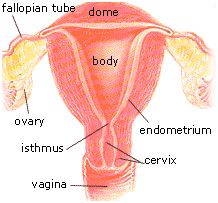Almost 5% of female infertility is caused by uterine anatomic defects.
Congenital defects are those that are related to incomplete forming of the inside of the uterus during the embryonic period, like unicornuate, bicornuate and septate uterus.



Acquired defects are the ones that develop during a woman’s lifetime, like, fibroids, polyps and intrauterine adhesions.
Functional and anatomical defects may prevent pregnancy and its normal continuation. When uterine defects are encountered after an HSG is performed, in a woman suffering from abnormal bleeding or abortion, further testing is mandatory.

How uterine anatomic defects are diagnosed
Diagnosis is made by performing the following tests:
- Sonohysterogram
Ultrasound after uterine dilatation with normal saline. - Hysterosalpingogram (HSG)
This method uses x-rays and a special dye to detect uterine defects. - Hysteroscopy
This method uses a small fiberoptic telescope inserted inside the uterus cavity. - Laparoscopy
This method uses a small fiberoptic telescope inserted, through an incision near the navel, inside the abdominal cavity.

